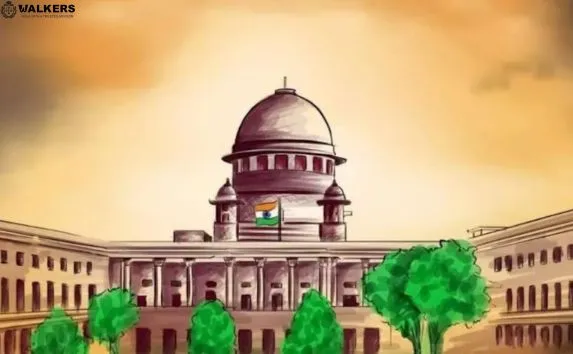


Advocate Prashant Bhushan, on behalf of the NGO Association for Democratic Reforms, has filed a petition in the Supreme Court seeking direction to the Election Commission of India (ECI) to introduce Voter Verifiable Paper Audit Trail (VVPAT) in Electronic Voting Machines (EVMs). The petition cites the 2013 judgement in the case of Subramanian Swamy v. Election Commission of India, where the Supreme Court held that a "paper trail" is essential for free and fair elections. The petition argues that every voter must be able to verify that their vote has been recorded accurately, and that the VVPAT slip displayed for around seven seconds after pressing the button on the EVM through a transparent window is the only way to ensure this. The VVPAT slip enables the voter to verify that their vote has been recorded correctly on the internally printed slip before it falls into a ballot box.
The petition filed by the Association for Democratic Reforms in the Supreme Court has highlighted a "complete vacuum" in law as the Election Commission of India (ECI) has not provided any procedure for voters to verify that their vote has been "counted as recorded", which is an essential aspect of voter verifiability. The current procedure where the ECI only counts the electronically recorded votes in all EVMs and cross-verifies the relevant EVMs with VVPATs in only 5 randomly selected polling stations in each assembly constituency is deficient for several reasons. Firstly, the electronic recording of the voter's choice in the EVM does not meet the criteria of the vote being verified as "recorded as cast" as the voter only verifies the VVPAT. Secondly, there is no way for voters to verify that their individual vote has been counted as recorded, as the ECI has not provided a procedure for them to match the VVPATs that they had certified as being "recorded as cast" with what is actually counted. Additionally, Rule 56(D)(4)(b) as incorporated through Section 66-A of Conduct of Election Rules, 1961, provides that the count of VVPATs shall prevail over the count reflected in EVMs, which is a statutory admission that VVPATs accurately capture the voter's will, and errors or malafides in the results captured in the EVMs cannot be ruled out.
The petition filed by the Association for Democratic Reforms has also highlighted that the count stored in EVMs is inherently susceptible to variance with the count reflected in VVPATs due to various reasons such as bonafide human errors in the complex process involving multiple individuals, technical snags, and malafide actions. In light of this, the petition seeks a declaration that every voter has a fundamental right to verify that their vote has been both "recorded as cast" and "counted as recorded".
TAGS: NGO Supreme Court Election Commission of India Voter Verifiable Paper Audit Trail VVPAT Electronic Voting Machines EVMs Subramanian Swamy v. Election Commission of India free and fair elections VVPAT slip ballot box law voter verifiability electronically recorded votes polling stations assembly constituency variance errors malafides Rule 56(D)(4)(b) Conduct of Election Rules 1961 human errors technical snags fundamental right recorded as cast counted as recorded.